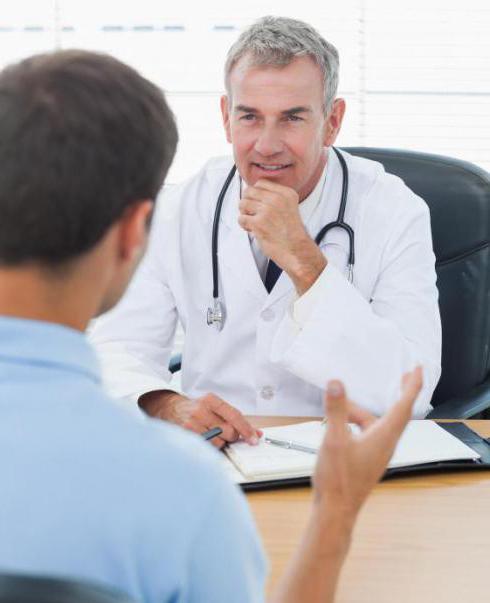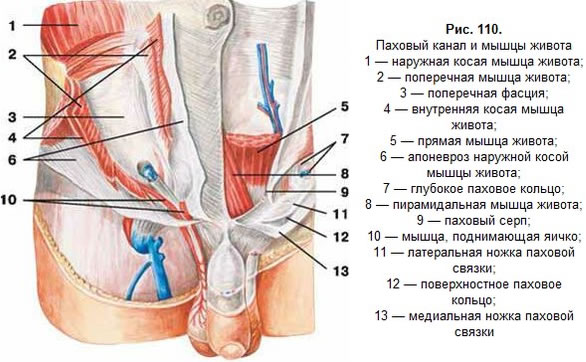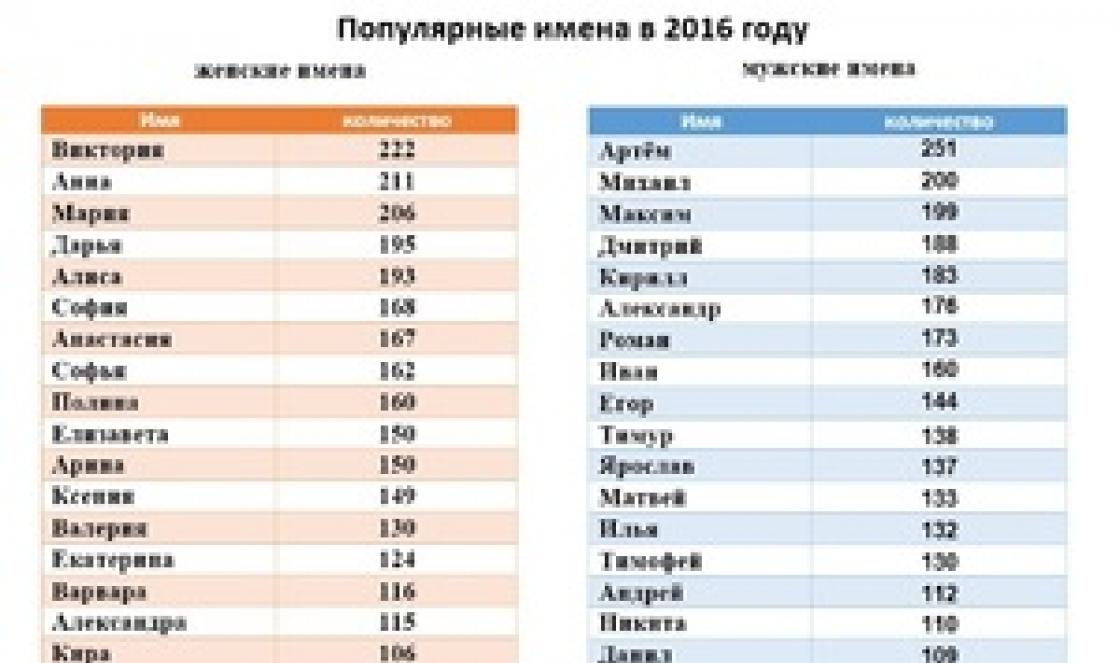In addition, there is another, no less important reason - the accumulation of inflammatory cells in the area where the microorganism is detected. Most often, microscopic organisms reach the lymph nodes using vessels with lymph flow from a certain area of the body that has recently been infected. 
Symptoms
Inguinal lymphadenitis has main symptoms, which, if detected, can be sure of the presence of the disease. These include the following:
- the lymph nodes located in the groin area have increased in size and become significantly denser;
- you feel weak and your body temperature has increased;
- the skin in the area of the inflamed lymph nodes also becomes inflamed and takes on a reddish color;
- in the groin area there are frequent and sometimes sharp pains during walking or other active activities.
Lymphadenitis usually does not spread to other lymph nodes. That is why this problem can be eliminated quite quickly and without harming these other organs.

Diagnostics
The lymph nodes in the groin area in a healthy person are not enlarged, they are soft and do not cause discomfort. In normal-built men, it is often very difficult, if not impossible, to palpate healthy lymph nodes.
First of all, the doctor examines and then immediately tells the patient about the first guesses and possible reasons problems. This is followed by a conversation with the patient, which will help the doctor determine the further method of diagnosis.
The basis for diagnosing inguinal lymphadenitis is general analysis blood, thanks to which changes in its composition will be more accurately determined. If there is a suspicion of a tumor in the circulatory system, a biopsy of the affected nodes is performed. After this, the examination continues as normal.
Also, we should not forget that in the presence of swollen lymph nodes, the doctor must rule it out, because without this procedure it may begin to progress in the future and cause damage to the patient’s health. But excluding her is the right move, because in this case there will be no more problems with her. The inguinal canal ring can also take part in the diagnosis, but only with an accurate decision and strong recommendations from a specialist.
Treatment
If lymphadenitis appears as a result of an infection or a sexually transmitted disease, the main task of treatment in the hospital will be to eliminate them. A quick solution to the problem is quite possible if, after eliminating the infection, the lymph nodes return to normal on their own soon.
In other cases, the main source of the disease cannot be accurately determined, so general radiotherapy is prescribed. This is followed by standard therapy, aimed mainly at strengthening the lymph node system.
More recently, people considered surgery to be the best treatment. Although in lately A number of studies have been conducted showing that removal of affected lymph nodes often contributes to the formation of an incompletely correct lymph outflow. 
Sprain
The usual one, where the inguinal rings are also involved, happens quite often and for various reasons. This injury is not the most painless, so it can be very difficult to survive.
Athletes most often encounter this problem after violating certain rules when working out in the gym, for example, lifting heavy weights. But despite this, many men have a natural tendency to frequent dislocations in the area hip joint, which further leads to stretching. Inflammatory processes often create problems with tendons, disrupting their functioning, and then leading to serious consequences.
The human groin area is a plexus of part of the musculoskeletal system or, more specifically, the hip joint, blood vessels and nerve fibers. At this point, the large femoral muscles of the posterior and inner surfaces are attached, and their connection is formed by means of the ligamentous tendon apparatus. In this regard, an injury such as a sprained groin ligament is considered a common occurrence.
Anyone who, with insufficient physical training, makes movements that exceed the limits of the natural amplitude of mobility of the muscles of the lateral planes can be susceptible to pathology. Most often, the large triangular and longus muscles, which are located on the inside of the thigh, are stretched.
More often, this injury occurs during sports activities associated with sharp turns and changes in the trajectory of movement. lower limbs, for example, in football. Other, less common causes of ligament injury can be a fall, incorrect leg positioning, diseases of the hip joint, inflammatory processes of the tendon apparatus and muscles, and a predisposition to dislocations in the hip joint.
You can go straight to the section you need
Symptoms and characteristic manifestations of a groin strain
The main symptoms indicating a sprained inguinal ligament are the following:
- manifestation of a characteristic crunch in the femoral area:
- the appearance of edema and swelling in the groin area some time after injury;
- painful sensations of varying degrees of localization;
- the appearance in some cases of compaction in the area of the inguinal ligaments, which may appear a day after receiving a sprain;
- hematoma formation;
- local increase in temperature in the affected area;
- absence or limitation of the ability to independently change the position of the leg and move it to the side;
- the appearance of depressions and bumps on the injured leg, which may result from contraction of the triangular muscles.
Grouping sprains by severity
Groin muscle strains can be classified into three main levels of severity, depending on which symptoms may be more or less intense. Also, the treatment of the victim and the duration of the recovery period depend on the degree of injury.
In medical practice, the following degrees of severity of groin muscle strain are distinguished:
- First, a moderate degree in which a muscle strain is accompanied by barely noticeable symptoms and mild discomfort. The painful sensations are mild and of a lasting nature. The presence of even mild edema is not always observed. The victim can move independently. In this case, there is no need to treat the patient in a hospital.
- Second, the average degree is characterized by the manifestation of more distinct symptoms. The pain can be moderately intense and intensifies with the patient's mobility. There is moderate swelling, as well as hematomas and bruises as a result of subcutaneous hemorrhage. Partial movement is possible. At the same time, there are difficulties with jumping and running.
The third, most severe degree, in which ligament rupture may be added to the sprain. The symptoms are pronounced. Patients experience sharp, unbearable pain that does not decrease even at rest. Edema and hematoma have a wide area of localization. In some cases, muscle spasms are observed. Walking independently is difficult. In this case, victims need pain relief and urgent hospitalization to make an accurate diagnosis and prescribe immediate optimal treatment. Treatment may last several months.

All characteristic symptoms can spread to the outer and inner thighs. This injury also has a chronic form, in which classic symptoms do not appear. Often they begin to be felt during the development of secondary pathologies, which can occur against the background of scar modifications of muscle and tendon tissue. The chronic form of the disease is mainly observed in professional athletes.
Independent and outpatient treatment
As first aid, the victim can independently apply cold to the injured area. Ice from the freezer, a heating pad, or plastic bottle With cold water and other improvised means.
To the patient In the first 1-2 weeks, a gentle regime is recommended, in which any physical activity is not advisable. It is also necessary to protect yourself from any independent movement, and at first it is best to walk with the support of crutches. To better immobilize the affected area, it is advisable to apply a tight bandage. After providing first aid, it is advisable to take the patient to a hospital or emergency room for examination by a surgeon or traumatologist.
As for the third acute severity of sprain, in this case hospitalization must be carried out without delay and, if possible, without delay. The fact is that the injured person could have suffered a broken bone or torn ligament, which only an experienced specialist could identify based on an X-ray examination.
For more serious injuries, when the result of untimely and unqualified treatment may be the development of various sad consequences of diseases, such as others, consultation with a specialist is necessary.
If there are no bone fractures or ligament ruptures, the doctor will instruct the patient to avoid tension in the injured area, which can aggravate the situation, to exclude sports activities for a certain period until the injured person is fully restored, and not to lift heavy objects. In this case, it is advisable to use special anti-inflammatory ointments. Plaster application is not practiced; a tight bandage is sufficient.
During the rehabilitation period, treatment is reduced to sessions of physiotherapy, therapeutic massage, and exercise therapy.
He also offers his own recipes for the treatment of sprained inguinal ligaments. traditional medicine. An excellent remedy, tested in practice, is turmeric powder, diluted with water to a creamy consistency. This mixture must be carefully rubbed onto the damaged area.
Typically, pain in the groin after a sprain can last up to several months. However, the prognosis with timely and correct treatment is always favorable.
Prevention and further actions
To avoid injury such as a sprained groin ligament, you must follow basic rules everyday life. It's about about preventing sudden movements of the legs, lunges and turns. All movements should be as smooth and deliberate as possible.
As for people who play sports, the prevention of sprains for them consists of warming up the muscles before starting training. To do this for 20 minutes need to do warm-up exercises or a light jog.
Also an important factor is maintaining yourself in optimal physical shape. Nowadays, when most people are engaged in sedentary and sedentary jobs, attention should be paid to strengthening muscles. To do this, it will be enough to visit the gym several times a week or do morning exercises and simple strength exercises at home.
How to pump up the groin muscles? These muscles activate the thigh. The groin refers to the depression between the thighs and the abdominal area. The groin muscles are located on the inside of the thigh, allowing it to be pulled inward. It must be said that pumping up the groin muscles is necessary to prevent stretching of these muscles. It is recommended to start training with exercises that do not require significant muscle tension, after which you need to gradually increase the range of motion. Regular exercise can significantly strengthen your groin muscles.
How to strengthen your groin muscles with Kegel exercises? Execution rules.
The groin muscles are weakened by numerous factors. For example, various diseases such as diabetes can have a negative impact on their weakening. Sometimes the groin muscles become weak after prostate removal. With the help of Kegel exercises, men can prevent, cure or avoid some problems caused by weakening of the pelvic diaphragm muscles. In addition, these exercises will be useful for men suffering from fecal and urinary incontinence.
Among other things, training the groin muscles will help men cope with erectile dysfunction. When performing Kegel exercises, you need to show diligence and perseverance. With its help, you can feel the pelvic muscles, significantly develop them and even learn how to control them. To achieve the best results, you should focus directly on the work of the pelvic muscles. In addition, you should try not to involve the muscles of the abdomen, thighs and buttocks. You should not hold your breath, but on the contrary, you need to breathe deeply and freely.
It is advisable to perform Kegel exercises after each urination. You need to accustom yourself to regularly strain your groin muscles, only then will you be able to achieve the desired effect. With constant exercise, a positive result will appear within a few weeks.
Exercises that will help work and pump up the groin muscles in men.
1. Classic hip adduction. This exercise should be performed while lying on your side. Place one foot on a chair. The lower leg should be slowly raised up, held for one to three seconds, and then slowly returned to the starting position. The number of repetitions is at least 12. Then a short rest and repeat the approach only for the second leg (that is, you need to roll over to the other side). If it is initially difficult to perform this exercise, then 5–6 repetitions are enough. The main thing is to gradually increase their number over time.
2. The second exercise is performed from a position - lying on your back. For convenience, your palms can be placed under the tailbone. Straight legs need to be raised up. Keeping your feet together, bend your knees and spread them apart. The feet should be brought as close to the groin area as possible. At a slow pace, this movement should be repeated 12 times. After a short rest - the next approach for the same number of repetitions.
3. Classic stretch of the groin muscles. This exercise is suitable for beginners. You need to sit down, put your feet together and spread your knees. Without bending your back, bend forward, place your elbows in front of your shins and pull your pelvis towards your heels. You should feel a good stretch in the muscles.
4. Raising the pelvis while lying on your back. One leg should be placed on a chair, and the other should be straightened up. Next, you should lift your pelvis a few centimeters until you feel a strong tension. Then lower yourself and repeat the movement at least 16 times. Then repeat the approach for the second leg.
Often, sprains in the groin area are observed during sports activities. And this is done as follows: during a sharp, strong acceleration, a sudden turn of the leg, a sharp change in direction, incorrect positioning of the leg, a fall, lymphadenitis in the groin, overstretching, the tendons and muscles located in the area of contact of the torso and hips are injured.
As a rule, it is the large triangular one that is often damaged, longus muscle, which is located on the inner side of the thigh.
Symptoms of a sprained inguinal ligament
The main symptom of a sprained groin ligament is a kind of crunching sound in the hip area. After some time, swelling, swelling and pain may appear in the groin area. After about a day, a lump may appear in the area of the sprained inguinal ligament. After some time, namely after a day, a bruise and even greater swelling often appear. In this case, the long triangular muscle is not able to contract, and a depression, “bump,” etc. may appear on the injured leg.
Degrees of inguinal ligament stretching
Groin sprains are divided into three grades based on the volume and intensity of damage:
1 The first degree is characterized by slight discomfort in the area of the injured leg, but the person is able to move.
2 The second degree of groin sprain is characterized by the same mild pain in the groin area, and the ability to perform some exercises is limited, such as running, long and high jumps, etc. In addition, swelling and bruising may occur.
3 The third degree of sprain of the inguinal ligaments implies severe pain while walking. Severe bruising and swelling often occur, and muscle spasms may occur.

Treatment of sprained inguinal ligaments
As with any injury such as a hamstring strain, you should immediately apply something cold to the injured area: ice, a frozen piece of meat, a handful of snow, a bottle of very cold water, etc. Then apply a tight bandage. The victim should not move in any way; he must be ensured complete rest. Sometimes crutches help. After providing first emergency aid, the victim should be immediately shown to a doctor. The fact is that a sprain in the groin can easily be confused with a fracture or dislocation, but here a completely different treatment is required.
The traumatologist will most likely advise you to strain the damaged area as little as possible in order to avoid worsening the situation, to exclude sports (only light jogging is possible), and heavy lifting. He will also most likely prescribe pain-relieving ointments, tablets, etc. In this case, plaster is not applied.
One of the proven folk remedies is turmeric powder. It should be mixed with a small amount of water to make “sour cream”, and then rub it on the sore spot.
Prevention
Pain in the inguinal ligaments can persist for up to 3-4 months. To avoid rupture of the inguinal ligaments and stretching of the back muscles, all movements must be made smoothly, without sudden twists. Before playing sports, you should “warm up” your muscles. These are, perhaps, the main points that should be followed to maintain the ligaments in a normal position.
Pain in the groin area is a rather unpleasant problem that affects both men and women. Elimination of this symptom directly depends on the causes of its occurrence, which may be associated with household microtraumas, more serious injuries (as a result of strong physical activity), as well as with many dangerous diseases. It is worth noting that in the groin area, in both men and women, there are important organs: the testes and uterus, respectively. Therefore, if any discomfort You should seek help from a specialist as soon as possible.
Causes of pain in the groin area
As you can already understand from the above, the causes of pain in the groin area can be very diverse. There is a large accumulation of muscles and ligaments that are prone to stretching and tearing under the influence of physical activity, and often this is the main reason.
Also, do not forget that the intestines are located in the groin area, so the pain may be associated with a disruption in their functioning. This can be either a minor illness or a serious illness (for example, a hernia). Painful sensations in the groin can occur as symptoms of many diseases: tumors (benign and malignant), hematomas resulting from groin injuries, as well as many urological diseases. To identify the exact cause of pain, you need to use the services of a good urologist, who will determine it based on the symptoms present.
Symptoms of pain in the groin area
It is important to understand that symptoms of this type of pain can appear either abruptly or gradually. Sometimes it all starts with a slight “whining” or tingling in the groin area, but over time, as the disease progresses, the pain can intensify and lead to serious illnesses.
As you know, the groin muscles regulate many movements of the body, its inclination, as well as human movement. It is in these areas that the first symptoms of pain in the groin area may occur: difficulty moving, joint pain, pain in the spine and lower back, etc.
The appearance of sharp pain in the groin, as a rule, indicates a hernia. The cause may also be serious diseases, such as tumors, inflammation of the testicles, menstruation disorders, acute adnexitis. This type of pain requires immediate medical intervention, otherwise the consequences can be extremely dire.
Diagnosis and treatment of pain in the groin area
In most cases, groin pain is a sign of quite serious diseases, in which self-medication will not help. Diagnosis of diseases that cause groin pain is carried out by a urologist. Each disease has its own characteristic features, according to which your treating doctor makes a diagnosis and prescribes a course of treatment.
Treatment of pain in the groin area is a highly individual process that depends on many factors, mainly on the causes of pain. As mentioned above, the course of treatment is determined by the attending physician, since self-medication in this case is extremely inappropriate. In most cases, these symptoms are treated with therapeutic massages, physiotherapy and various medicines. As a rule, such drugs do not fight the cause of the disease, but only eliminate pain. Some diseases, such as hernia and various sexually transmitted infections, may require surgery. But still, in most cases, doctors give general recommendations, which do not depend on the causes of the disease. This is following a strict diet and limiting fluid intake, eliminating physical activity, a clear daily routine and giving up bad habits - all these factors can significantly speed up the process of your treatment or, conversely, slow it down.
In any case, pain in the groin area is a serious signal for any person. Such things require immediate treatment in order to avoid complications that can lead to a number of unpleasant consequences, including infertility (in the case of diseases of the reproductive system).





